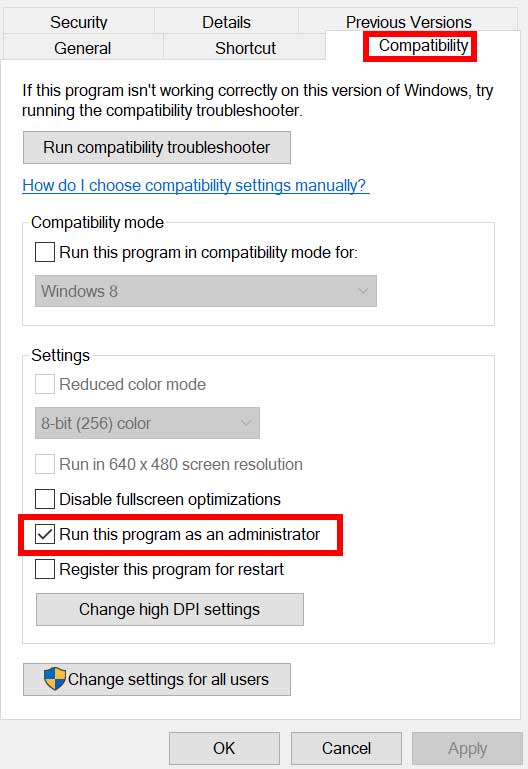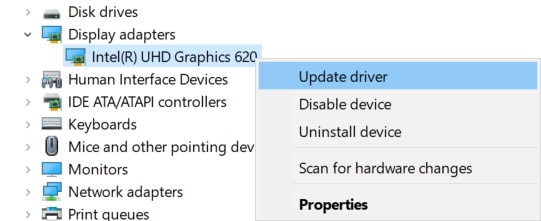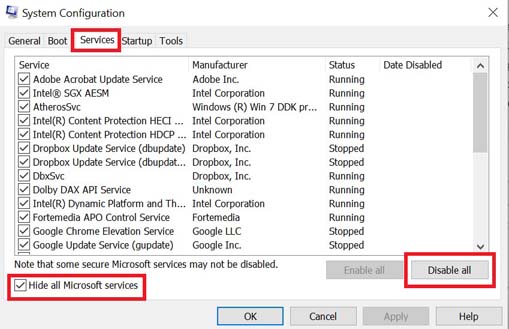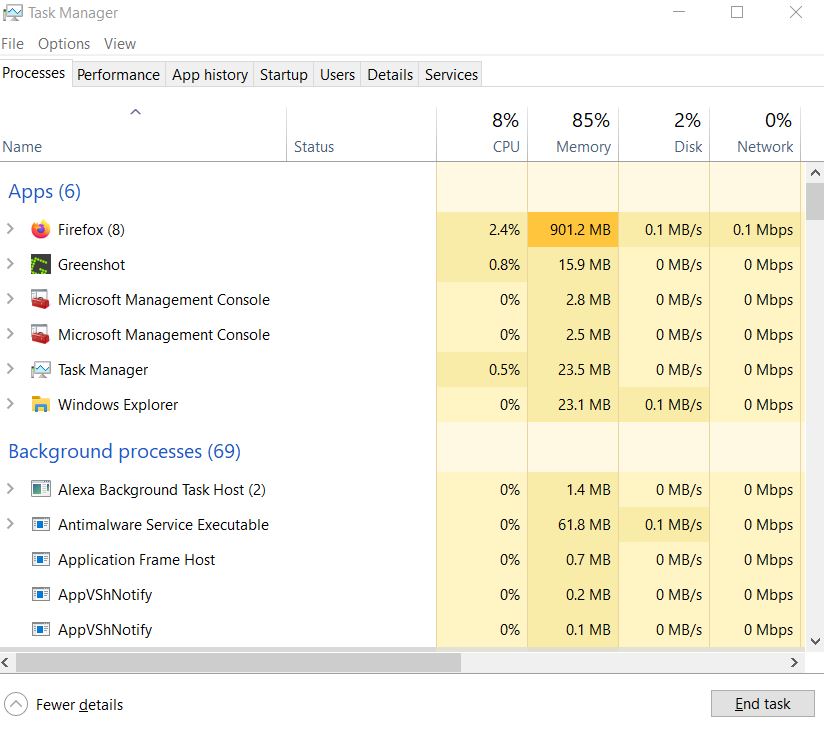Overwatch is a 2016’s team-based multiplayer first-person shooter video game that has been developed and published by Blizzard Entertainment. It seems that the game has a lot of bugs or issues whatsoever that might gonna trouble you a lot. Now, if you’re also one of the Overwatch players and facing issues with crashing on the PC then make sure to follow this troubleshooting guide completely until the problem gets fixed.
When it comes to PC gaming, it’s quite common for every PC gamer to have multiple issues like crashing or not launching the game properly. No matter which PC configuration you’re using, the game might crash due to several possible reasons. It’s also worth mentioning that the PC games may encounter issues with crashes or lags or stutters or black screen or graphical glitches, etc. Now, without wasting any more time, let’s jump into it.
Page Contents
- Why Does Overwatch Keep Crashing?
- Fix: Overwatch Crashing on PC
- 1. Check System Requirements
- 2. Run Overwatch as an administrator
- 3. Repair Game Files on Battle.Net Client
- 4. Update GPU Drivers
- 5. Perform a Clean Boot
- 6. Close Unnecessary Background Tasks
- 7. Disable Antivirus and Firewall Program
- 8. Try Disabling Overlay Apps
- 9. Set Power Options to High Performance
- 10. Set Windows System to Best Performance
- 11. Disable the SysMain Service
- 12. Adjust Overwatch Exe Properties
- 13. Delete Battle.Net Cache Data
Why Does Overwatch Keep Crashing?
According to multiple reports online, plenty of Overwatch PC players are experiencing issues with the startup crashing, lagging, black screen, and more. Whereas plenty of PC-related problems may cause several issues whatsoever like compatibility issues with the game, overlay apps, antivirus blocking, etc. Additionally, outdated GPU driver, background running tasks, DirectX issues, startup apps, overlay apps, etc can trigger multiple issues with crashing.
Now, if you’re also facing such an issue then make sure to follow this troubleshooting guide to fix it. It’s recommended to exit the game properly and then reboot the PC to refresh the system. It’ll fix multiple issues with the game launching on the PC.
Also Read
Fix: Overwatch Crashing on PC
Here we’ve shared a couple of possible workarounds that should fix the issue. So, without wasting any more time, let’s jump into it.
1. Check System Requirements
It’s highly recommended to check for hardware specifications on your PC whether it’s compatible with the Overwatch game or not. If not, then you should have to upgrade your hardware. Otherwise, you may not be able to play the Overwatch game or may experience crashing issues whatsoever.
Minimum Requirements:
- OS: Windows 7 / Windows 8 / Windows 10 64-bit (latest Service Pack)
- RAM: 4 GB
- CPU: Intel Core i3 or AMD Phenom X3 8650
- Video Card: NVIDIA GeForce GTX 460, ATI Radeon HD 4850, or Intel HD Graphics 4400
- Storage: 30 GB of free space
- Internet: Broadband Internet Connection
Recommended Requirements:
- OS: Windows 7 / Windows 8 / Windows 10 64-bit (latest Service Pack)
- CPU: Intel Core i5 or AMD Phenom II X3 or better
- RAM: 6 GB
- Video Card: NVIDIA GeForce GTX 660 or AMD Radeon HD 7950 or better
- Storage: 30 GB of free space
- Internet: Broadband Internet Connection
2. Run Overwatch as an administrator
Make sure to run the Overwatch exe file as an administrator to avoid user account control regarding privilege issues. You should also run the battle.net client as an administrator on your PC. To do this:
- Right-click on the Overwatch exe shortcut file on your PC.
- Now, select Properties > Click on the Compatibility tab.

- Make sure to click on the Run this program as an administrator checkbox to checkmark it.
- Click on Apply and select OK to save changes.
3. Repair Game Files on Battle.Net Client
Mostly corrupted or missing game files on your computer won’t gonna notify you but whenever you try launching the game, it’ll crash or after loading sometimes it won’t gonna open. In that scenario, you’ll definitely gonna scratch your head that what’s going on. But repairing the installed game files directly from the client will resolve multiple issues. To do so:
- Open the Battle.net client on your computer > Head over to the library and click on Overwatch.
- Click on Options > Select Scan and Repair > Choose to Start Scan.
- Wait for the process to get completed and then you’ll be able to play the game properly. Make sure to reboot the client to apply changes immediately.
4. Update GPU Drivers
Somehow it may also be possible that your graphics driver hasn’t been updated for a while. If that’s the case, then make sure to update the graphics drivers on your PC to remove potential glitches whatsoever. To do so:
- Press Windows + X keys to open the Quick Link Menu.
- Now, click on Device Manager from the list > Double-click on Display adapters.
- Right-click on the dedicated graphics card that you’re using.

- Next, select Update driver > Choose to Search automatically for drivers.
- If there is an update available, the system will automatically download & install it.
- Once done, restart the computer to apply changes immediately.
5. Perform a Clean Boot
Some of the apps and their services may start automatically while booting the system right away. In that case, those apps or services will definitely gonna use a lot of internet connection as well as system resources. If you’re also feeling the same, make sure to perform a clean boot on your computer to check for the issue. To do that:
- Press Windows + R keys to open the Run dialog box.
- Now, type msconfig and hit Enter to open System Configuration.
- Go to the Services tab > Enable the Hide all Microsoft services checkbox.

- Click on Disable all > Click on Apply and then OK to save changes.
- Now, go to the Startup tab > Click on Open Task Manager.
- The Task Manager interface will open. Here go to the Startup tab.
- Then click on the particular task which has a higher startup impact.
- Once selected, click on Disable to turn them off from the startup process.
- Do the same steps for each program that has a higher startup impact.
- Once done, make sure to restart your computer to apply changes.
6. Close Unnecessary Background Tasks
Whenever there is a couple of unnecessary background running tasks that appear and seem to be third-party sources, make sure to close them one by one to reduce consumption of CPU/Memory usage. To do this:
- Press the Ctrl + Shift + Esc keys to open Task Manager.
- Click on the Processes tab > Select the task that you want to close.

- Once selected, click on End Task. Make sure to do the steps for each task individually.
- Once done, just restart your computer to change effects immediately. Now, check whether the Overwatch Crashing issue has been fixed or not.
7. Disable Antivirus and Firewall Program
It’s worth recommending to disable the antivirus program as well as the firewall protection on your computer to check for the issue. Sometimes the aggressive antivirus or security protection software can prevent game files to run properly or find them as viruses which basically trouble you to launch them or play them smoothly. To do that:
- Click on the Start menu > Type Control Panel and open it.
- Now, type firewall in the search box > Click on Windows Firewall.
- From the left pane, click on Turn Windows Firewall on or off.
- Make sure to select Turn off Windows Firewall for the Private, Domain, and Public Network Settings.
- Finally, reboot the PC to apply changes, and try checking the issue.
Now, you’ll have to disable the antivirus protection from your computer. To do so:
- Head over to the Windows Settings > Privacy and Security.
- Now, go to Windows Security > Virus & threat protection.
- Click on Manage settings >Then turn off the Real-time Protection option.
- Once done, make sure to reboot your PC to apply changes.
Even if you’re using any other third-party antivirus software on your PC then make sure to turn it off as well.
8. Try Disabling Overlay Apps
It seems that a couple of popular apps do have their own overlay program that can eventually run in the background and cause issues with the gaming performance or even launching issues. You should turn them off to fix the issue by following the steps below:
Disable Discord Overlay
- Launch the Discord app > Click on the gear icon at the bottom.
- Click on Overlay under App Settings > Turn on the Enable in-game overlay.
- Click on the Games tab > Select Overwatch.
- Finally, turn off the Enable in-game overlay toggle.
- Make sure to reboot your PC to apply changes.
Disable Xbox Game Bar
- Press Windows + I keys to open Windows Settings.
- Click on Gaming > Go to Game Bar > Turn off Record game clips, screenshots, and broadcast using Game bar option.
If in case, you’re unable to find out the Game Bar option then just search for it from the Windows Settings menu.
Disable Nvidia GeForce Experience Overlay
- Launch the Nvidia GeForce Experience app > Head over to Settings.
- Click on the General tab > Disable the In-Game Overlay option.
- Finally, restart the PC to apply changes, and launch the Overwatch game again.
Also do keep in mind that you should disable some other overlay apps like MSI Afterburner, Rivatuner, RGB software, or any other third-party overlay apps that run in the background always.
9. Set Power Options to High Performance
Some PC games like Overwatch are quite big in size and due to their high-end graphics or processes, they require maximum system resources while launching or running. So, it’s highly recommended to set power options to High Performance on your Windows system so that it won’t limit the use of system resources while playing Overwatch. To do that:
- Click on Start or press Windows key > Type Power Options and open it.
- Now, click on the Additional power settings option > Turn on the High-Performance toggle.
- Once done, make sure to reboot your system to change effects immediately.
- This method should fix the Overwatch Crashing issue on the PC.
10. Set Windows System to Best Performance
You’ve some performance issues on your Windows computer even you’re not running any high-end applications or games or your hardware configuration is high enough then make sure to set the Windows system to Best Performance mode by removing additional features or visual enhancements. To do this:
- Go to Windows Search and type Performance then open it.
- Now, click on Adjust the appearance and performance of Windows.
- Just turn on the Adjust for best performance option for better results.
Please Note: Turning on the best performance option will reduce the graphics quality of the system UI or change the UI elements or even font design. But do not worry. If that option didn’t help you, just go back to the recommended mode or the previous option again.
11. Disable the SysMain Service
Make sure to disable the SysMain service that’s also known as SuperFetch which eventually causes issues with the game launches and gameplay. To turn it off:
- Press the Windows + R keys to open the Run dialog box.
- Now, type services.msc on the field and hit Enter to open Services.
- Find SysMain service from the list of services > Right-click on SysMain.
- Click on Stop > Right-click on SysMain again > Go to Properties.
- Set the Startup Type to Disabled > Click on Apply and then OK to save changes.
- Finally, restart the computer to apply changes.
12. Adjust Overwatch Exe Properties
Sometimes adjusting or tweaking some of the options directly from the Overwatch executable properties option will resolve multiple issues whatsoever. To do so:
- Right-click on the Overwatch executable file from the desktop or from the installed game location.
- Now, select Properties > Click on the Compatibility tab.
- Here click on Disable Fullscreen optimizations.
- Then click on Change high DPI settings > Enable the Override high DPI scaling behavior checkbox.
- Select Scaling performed by: Application > Click on Apply and then OK to save changes.
13. Delete Battle.Net Cache Data
It’s needless to say that corrupted cache data files can eventually cause several issues whatsoever. To do that:
- Close all the games first and then quit the Battle.net client too.
- Now, press Windows + R keys to open the Run dialog box.
- Type %programdata% and hit Enter to open the Program Data folder.
- Open the Blizzard Entertainment folder > Head over to Battle.net.
- Click on Cache > Select all files and delete them.
- Once all is deleted, just reboot your computer to apply changes. It should fix the Overwatch Crashing issue on the PC.
That’s it, guys. We assume this guide was helpful to you. For further queries, you can comment below.
